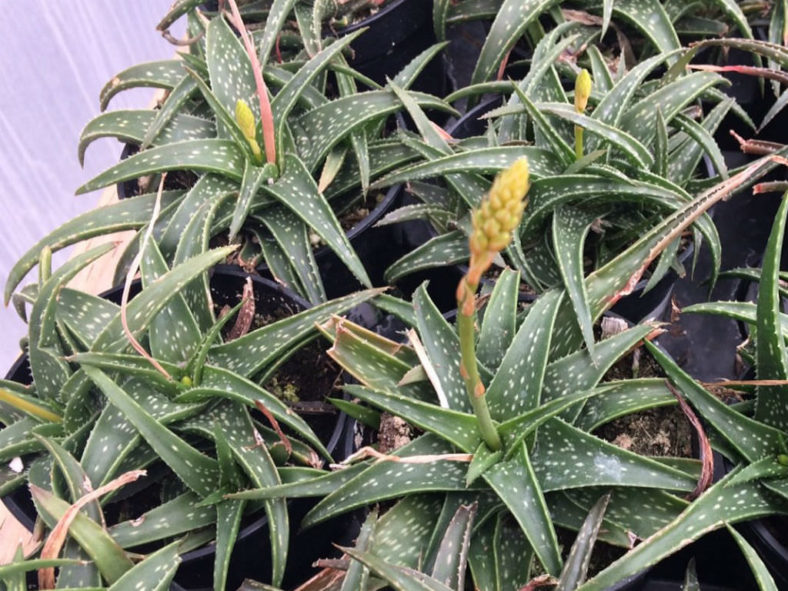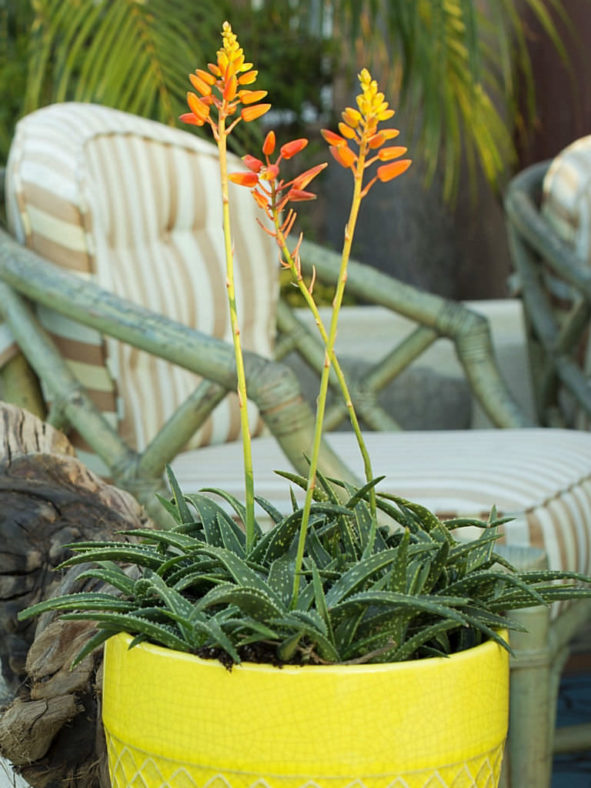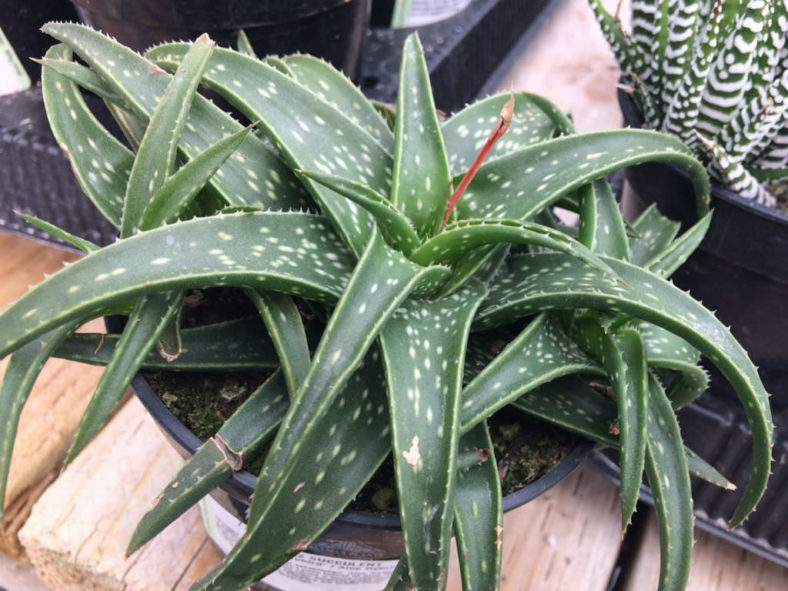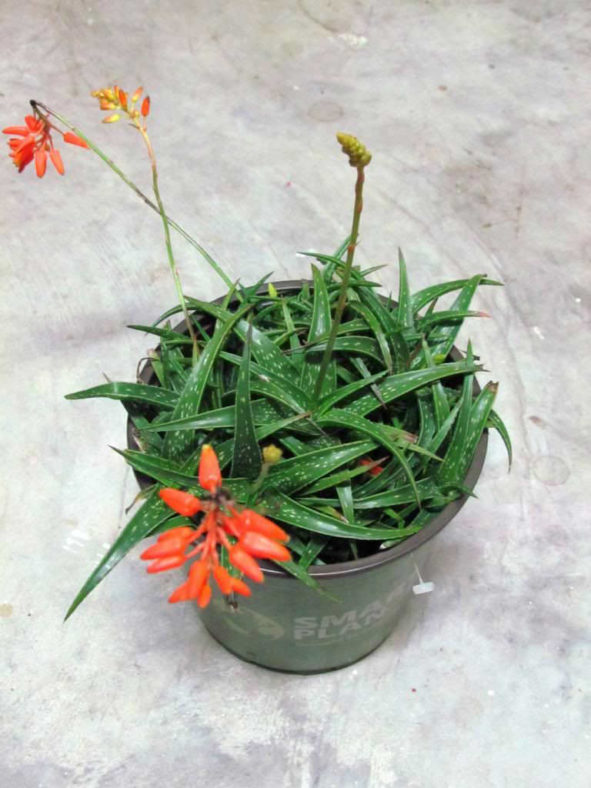Scientific Name
Aloe 'Firebird'
Common Name(s)
Firebird Aloe
Scientific Classification
Family: Asphodelaceae
Subfamily: Asphodeloideae
Genus: Aloe
Origin
Aloe 'Firebird' is a Shannon Lyons hybrid that results from a cross between Aloe descoingsii and Aloe thompsoniae.
Description
Aloe 'Firebird' is a small succulent that forms loose rosettes of slender, recurved, emerald green leaves with white speckles. The rosettes can grow up to 6 inches (15 cm) in diameter and produce numerous offsets around the base, forming an impressive clump.
This plant is a prolific bloomer, sending up tall spikes with bright tangerine flowers that brilliantly pop against the green foliage.

Hardiness
USDA hardiness zone 9b to 11b: from 25°F (-3.9°C) to 50°F (10°C).
How to Grow and Care
Aloes are very forgiving plants. However, as with all succulents, Aloe must never be allowed to sit in stagnant water, and the plant should be carefully monitored to watch for signs of overwatering.
Aloes are not particularly fast-growing and will only rarely need repotting. Repot plants in the spring that are tipping over their pots or have ceased growing. Use a fast-draining potting mix with one-third sand or pebbles. When repotting a larger plant, dividing the root ball carefully is possible. Some kinds of Aloe will send off offsets to be potted independently.
It needs intense, bright light. Once acclimated, it can withstand full summer sun. In the winter, provide bright light. It prefers warmer temperatures of 70°F to 80°F (21°C to 27°C) but will survive down to 40°F (4.5°C). Feed with a cactus fertilizer in the summer only. Suspend feeding in the winter as the plant goes dormant.
See more at How to Grow and Care for Aloe.
Links
- Back to genus Aloe
- Succupedia: Browse succulents by Scientific Name, Common Name, Genus, Family, USDA Hardiness Zone, Origin, or cacti by Genus
Photo Gallery
Click on a photo to see a larger version.


